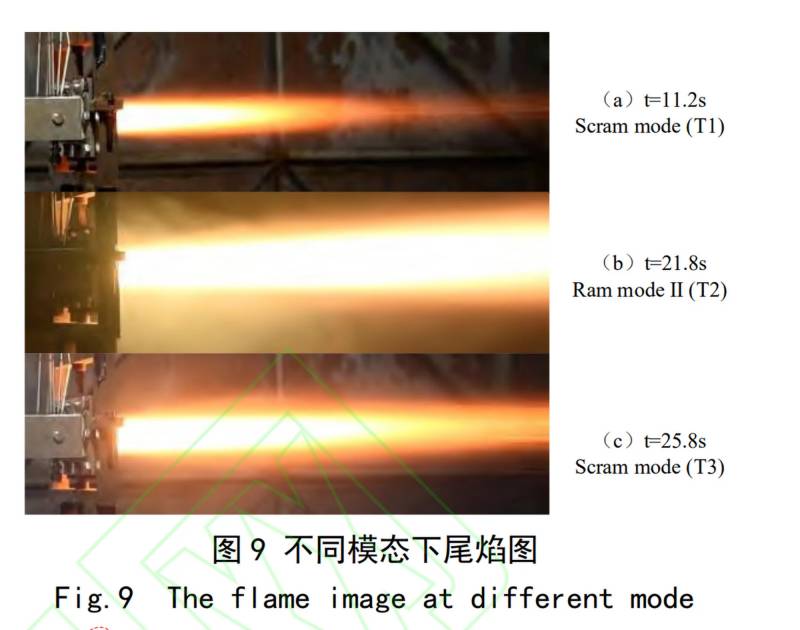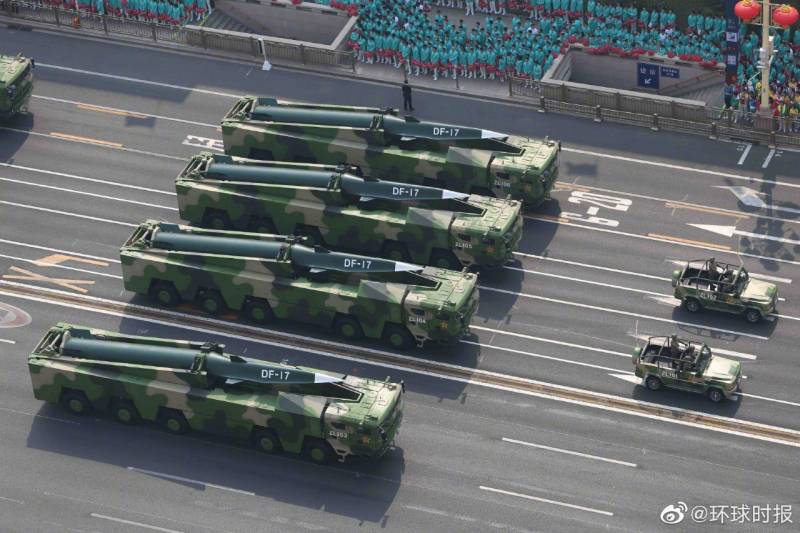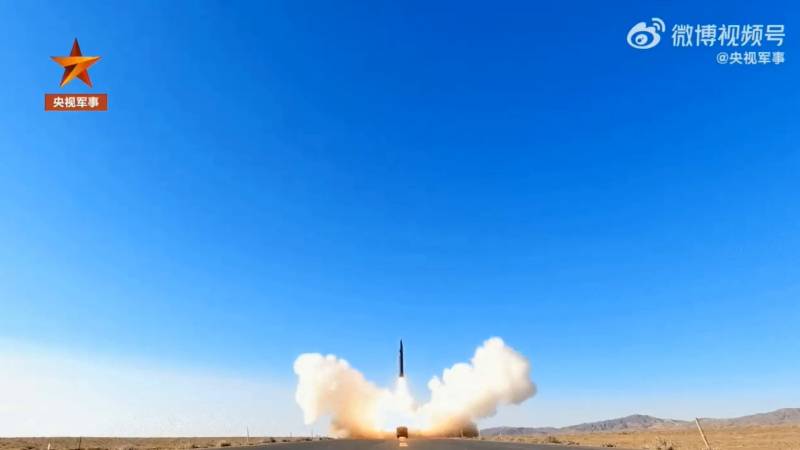China has developed an economical hypersonic ramjet engine

The nozzle apparatus of the new scramjet and jet stream in different modes. Photo by ONTU PLA / SCMP
Chinese scientific organizations are actively engaged in the subject of hypersonic technologies for use in aviation and rocket technology. Various studies are being carried out and experimental prototypes of technologies are being developed. Recently it became known about the creation of a new hypersonic ramjet engine. It is built on the basis of well-known ideas and new solutions and is characterized by increased energy performance and efficiency.
Hypersonic experiment
The new development of Chinese scientists was reported on February 13 by the South China Morning Post, citing a publication in the scientific journal Solid Rocket Technology, published in mid-January. The SCMP provides an overview of the new project, the research carried out and the results obtained.
Reportedly, a hypersonic ramjet engine (scramjet) was developed by specialists from the Defense Science and Technology University of the People's Liberation Army of China from Changsha. Work in this direction was headed by Associate Professor Ma Likun.
As part of the new project, specialists have worked out the design of a promising scramjet engine running on solid (powdered) fuel. It is noted that it differs from other ramjet engines in greater simplicity and several important innovations. The latter were supposed to ensure the operation of the engine in a wide range of speeds with stable fuel combustion. The aim of the project was also to increase efficiency.
According to this project, an experimental scramjet was manufactured. It was tested in a wind tunnel with flight simulation in different modes. The speed of such a “flight” reached 6M, the height was approx. 25 km. In general, the engine confirmed the calculated characteristics.

The DF-17 complex with a planning warhead is a serial model of a hypersonic weapons PLA. Photo Telegram / Vatfor
Based on the results of these studies, scientists from the PLA ONTU report that a solid-propellant scramjet engine has a number of advantages over other designs of a similar purpose. With the further development of the project, developments can be applied in practice as part of certain aircraft. It is noteworthy that in the context of the prospects for a new engine, the SCMP edition first of all recalled military programs.
New solutions
According to open data, the experimental engine from ONTU does not fundamentally differ from other modern scramjet engines and is built according to the classical scheme. In fact, this is a pipe of variable diameter, divided into an air inlet, an air duct, a combustion chamber and a nozzle apparatus.
The general principles of work also remain traditional. Atmospheric air under pressure formed by the flow velocity enters the air intake and then enters the combustion chamber. There, fuel is mixed with it. Burning, it forms gases for ejection through the nozzle and the formation of thrust.
There are two main innovations in the project from ONTU PLA. The first relates to the design of the air intake device and associated units. Due to the special configuration of the device and the channels behind it, the hypersonic airflow slows down to subsonic speed. Other types of scramjet engines are characterized by fuel combustion in a supersonic flow. The new Chinese engine further reduces the flow rate to optimize the combustion process.
The second innovation is the fuel and the way it is supplied. The scramjet uses boron in the form of a fine powder as fuel. Through special nozzles, fuel is fed into the combustion chamber, where it ignites and releases thermal energy. The nozzles are controlled and control the powder supply rate into the engine. Due to this, the intensity of combustion, energy production and, accordingly, thrust are regulated.

DF-17 rocket launch. A frame from a Chinese TV report
During tests in different modes and changes in various parameters, it was possible to determine the maximum parameters of the experimental engine. Thus, the temperature in the combustion chamber was brought up to 3000°C. This is about 50% higher than that of the bulk of modern ramjet engines.
At the same time, high efficiency is achieved. Reducing the inlet air velocity to subsonic provides more efficient fuel combustion. Due to it, the fuel efficiency of the scramjet engine was increased by 79%.
Unfortunately, the exact characteristics of the experimental engine have not yet been disclosed. Its dimensions and mass, achieved thrust and specific fuel consumption remain unknown. It is also unclear how far the project has moved: whether the new scramjet is purely experimental or can be brought to practical use within a reasonable time.
Applications
The exact goals and objectives of the new Chinese project have not been named. However, it is not difficult to guess for what purpose the university under the PLA is studying hypersonic ramjet engines. Obviously, experiments and experiments were carried out in the interests of the armed forces of the PRC, and in the future they can be used in real projects of hypersonic weapons.
Modern designs of hypersonic ramjet engines are being developed for use as part of advanced missile weapons. Such an engine makes it possible to create a combat missile with the highest flight performance and special combat capabilities. The scramjet gives a large active flight section and provides maximum speed for a long time. At the same time, the rocket is able to maneuver, and the engine compensates for the loss of energy and speed.

Presumably, the flight of an experimental hypersonic missile over a populated area, autumn 2021. Photo Telegram / ChDambiev
Judging by the disclosed data, the new engine from ONTU PLA is of interest from the point of view of use in real rocket technology projects. The declared capabilities of such a scramjet will improve the characteristics of a hypothetical missile and improve its combat capabilities.
First of all, you should pay attention to the efficiency of the new engine. A lower consumption allows you to reduce the fuel supply on board the missile without loss in speed and range, or save it and increase the combat radius. In addition, it is likely that there is an opportunity to increase traction and speed without harming other parameters.
As stated, the experimental engine not only shows high performance, but also has a simplified design. Accordingly, a rocket with such a scramjet will be simpler and cheaper. In addition, reducing the amount of fuel on board will optimize the layout of the rocket - for example, increase the warhead.
It should be noted that the new project can develop not only in the context of missile weapons. It is quite capable of becoming the basis for new theoretical and experimental developments. The scramjet engine from ONTU showed the fundamental performance and great potential of new solutions. All of them should now be developed. As a result, new configurations of intake devices and combustion chambers will appear, as well as more advanced compositions of powdered fuel.
Great promise
China has long been engaged in hypersonic direction and is already showing real results. So, a few years ago, the DF-17 complex with a planning hypersonic warhead entered service. There are unconfirmed reports of the development of other missile systems with special speed characteristics. They can already be tested, and in the near future they will be adopted.
It is obvious that Chinese scientists and engineers will continue to develop the hypersonic direction. The projects of the distant future will be based on current developments in the field of engines, materials, control systems, etc. Therefore, the recently completed experiments in the ONTU of the PLA in the field of engines are of great importance, and they should be paid attention to.
Information